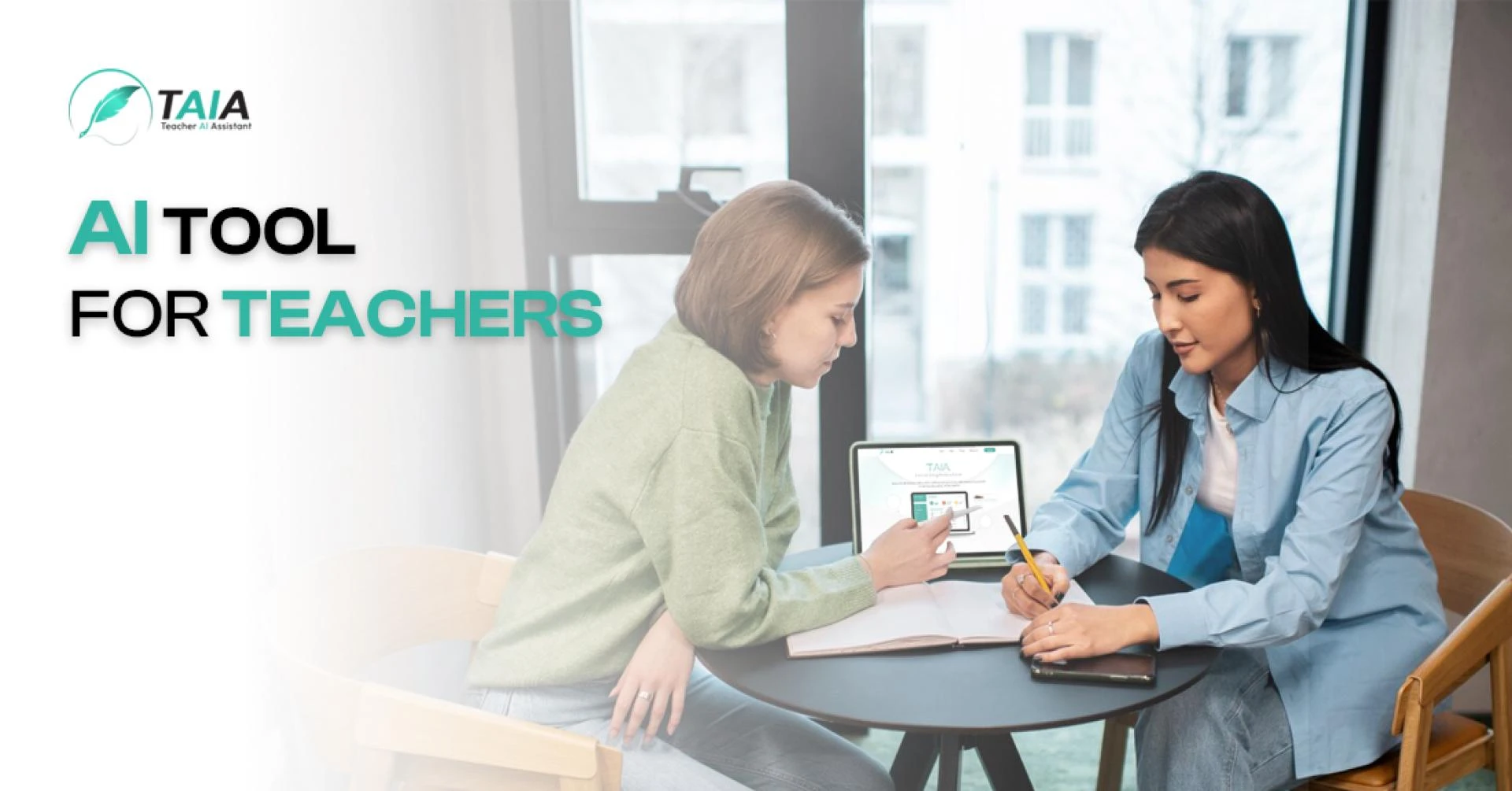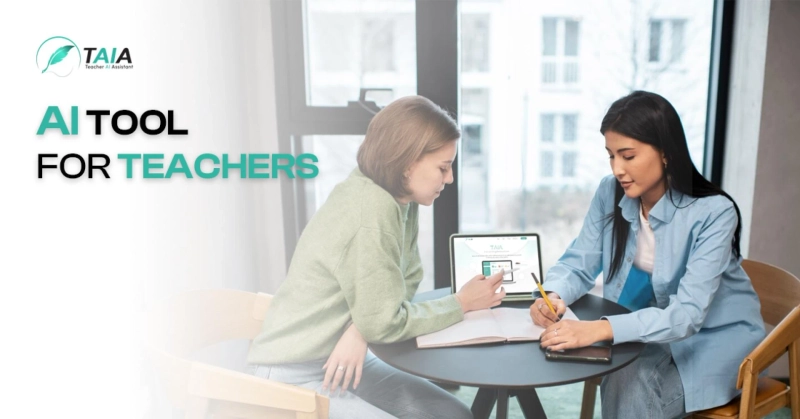What if teachers can start the day by seeing the colleague next door as the best source of professional growth? A school where support is easy to find and ideas move freely feels possible. Peer-to-peer learning helps turn this into an everyday experience.
This blog breaks down proven peer-to-peer models. It also shows how teachers in K-12 schools can use them to grow together. At the same time, it also explores AI assistants that cut manual work so staff can focus on sharing ideas and improving lessons.
What Is Peer-to-Peer Learning?
Peer-to-peer (P2P) learning is professional development driven by teachers and shared among teachers. In this model, educators plan lessons together, observe each other’s classes, and exchange feedback in a supportive cycle. The emphasis is on reflection, trust, and practical classroom solutions. This approach stands apart from top-down workshops that arrive once a term and fade quickly. Instead, growth happens inside the building, during the school day, and in the context of real student needs.
Why P2P Learning Matters in K-12 in the US
P2P learning matters because it meets teachers where they work. It encourages steady improvement, not a burst of new ideas that vanish by Monday. Teachers see how colleagues solve similar challenges, and they adapt those strategies in real-time. Confidence rises, empathy grows, and the cost of outside consultants drops. Most of all, a culture of inquiry takes root, and student learning benefits from teachers who feel heard and supported.
Core Models For K-12 Schools in the US
P2P learning thrives when clear, repeatable structures guide teachers through planning, observation, and reflection. A school chooses a model that fits its goals, timetable, and community. Schools also explore AI education tools to complement these peer learning structures. Every model pays attention to student needs. It records feedback in plain language and shows progress over time. When teachers follow the same steps, they build trust and save time. The most widely used models are:
1- Peer Coaching
Two teachers pair up, observe lessons, and trade feedback that targets specific goals. As a result, the growth cycle continues.
2- Lesson Study
Small teams co-plan a single lesson, teach it, and meet again to refine it. Each cycle yields a stronger lesson and a deeper shared understanding of pedagogy.
3- Professional Learning Communities (PLCs)
Grade-level or subject groups meet on a schedule, examine student work, set shared goals, and monitor progress. The routine builds accountability and momentum.
4- Critical Friends Groups
Five to eight teachers create norms for honest critique. They present dilemmas, review evidence, and suggest the next steps in a structured protocol.
5- Teacher Rounds
Inspired by medical rounds, teachers visit several classrooms in one block. They focus on a shared question, debrief together, and choose an action step.
Implementation Strategy
Peer learning grows when teachers feel safe to share ideas. Leaders amplify this spirit by celebrating small wins and inviting families to notice the growth. The following strategies can help you turn this shared spirit into daily practice:
1- Set Clear Goals and Expectations
Every peer learning effort begins with a shared goal that all participants understand. These goals might focus on improving classroom discussions, increasing student engagement, or refining assessment practices, and they give direction to all collaborative activities.
2- Build Time Into the Schedule
For peer learning to become routine, schools must include it within the regular timetable. When collaboration happens during work hours, it feels valued, manageable, and sustainable for all staff members.
3- Provide Feedback Training
Giving useful feedback takes practice, especially in a peer setting where trust is essential. Short, hands-on sessions help teachers learn how to offer observations that are specific, supportive, and focused on evidence from the classroom.
4- Leverage Collaborative Tools
Digital tools like Google Drive, Padlet, or Slack help organize shared work in one accessible space. These best AI tools for teachers that support ongoing communication and make it easy for teachers to return to notes, ideas, and plans without confusion.
Benefits For Teachers
- Teaching confidence grows because of timely and relevant feedback.
- A low-pressure space encourages the trial of new methods without formal evaluation.
- New teachers bridge the gap between theory and practice faster.
- Classroom puzzles turn into shared problems that yield shared solutions.
Recurring Challenges & Solutions
Peer learning works best with structured and steady support. Schools can lay a foundation with clear goals, scheduled time, feedback training, and simple work-sharing tools.
Limited Time
Many teachers struggle to find time for peer learning. Schools can solve this by using existing PD blocks or weekly staff meetings.
Initial Reluctance
Some teachers may hesitate to take part in new routines. Starting with volunteers and sharing early success stories helps build trust and interest.
Trust Gaps
A lack of trust can hold back open sharing. Schools can address this by setting clear norms, keeping feedback descriptive, and celebrating small steps forward.
Visionary Leadership
Leaders set the tone for collaboration. They schedule time, model vulnerability by sharing their own practice, and guard P2P work from being used as an evaluative tool. They also track impact through teacher reflections and student data to show sustained commitment.
Digital Extensions of Peer Learning
Online platforms widen the circle of collaboration. Video tools for teachers help share lesson clips and receive peer feedback. For example, Edthena, TeachFX, and Torsh TALENT are built specifically for this process. Teachers can record a short clip, upload it, and receive time-stamped feedback from peers or instructional coaches. These tools also help track teaching patterns, such as talk time and engagement. These insights give a clearer picture of classroom dynamics.
P2P Learning With AI Teaching Tools
Artificial Intelligence can speed up routine work and free more time for student-teacher interactions. You can use these three AI-powered tools to support P2P growth:
1- AI-Driven Feedback Tools
Services like TeachFX and Edthena analyze lesson recordings. They report metrics such as teacher talk time or question type distribution. Your staff can use these data points to anchor feedback in evidence rather than opinion.
2- Smart Lesson Planning Assistants
Because of productive AI tools, your staff does not need to waste time on lesson planning anymore. For instance, Teacher AI Assistant (TAIA) works in an extremely simple way. Only the user has to snap a photo of a lesson plan and submit it to the platform.
Every member of the PLC can open the lesson and offer tweaks on the same day. Once done, the plan can then be submitted to the linked system ( Canvas, Atlas, or VHL Central). As a result, teachers interact with one friendly platform instead of four dashboards. This way, more cognitive energy goes into reflection and collaboration.
3- Virtual Coaching Bots
Chat-based simulations present classroom scenarios and prompt teachers to choose a response. For example, tools like TalkMoves Application and Kira Learning AI Assistants help teachers practice strategies in a safe space without student pressure. Teachers can then bring these experiences back to peer meetings for deeper discussion and shared improvement.
End Note
During P2P learning, when teachers observe, reflect, and refine practice together, they learn new things and create a supportive culture. Leadership, thoughtful scheduling, and trustful norms keep the system strong. Digital platforms extend reach, and AI assistants such as TAIA remove time-consuming tasks that block collaboration.
With these tools and mindsets, you can build an academic community of teachers who learn from fellow teachers. As a result, perpetual growth can become a part of your school culture.


